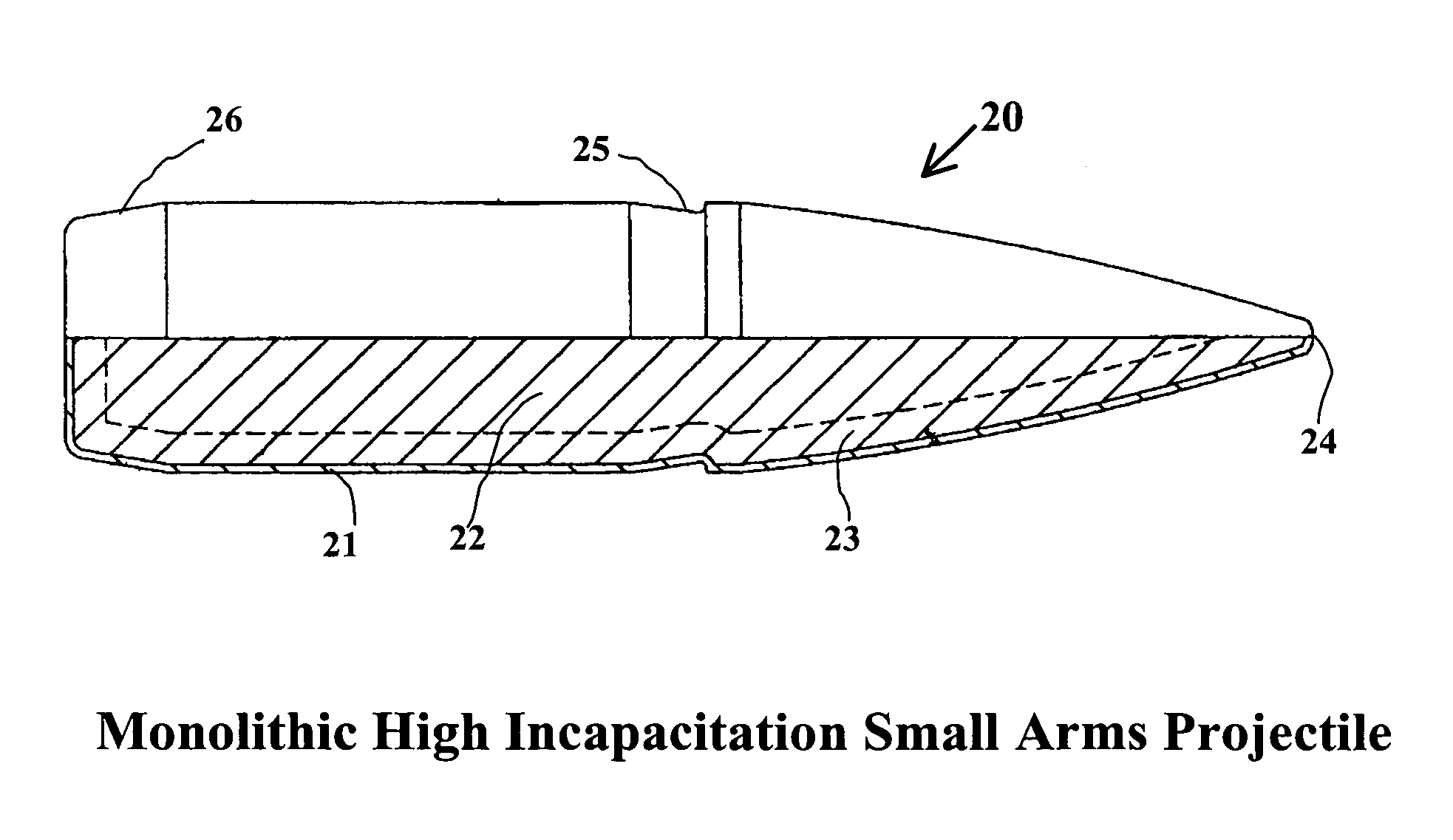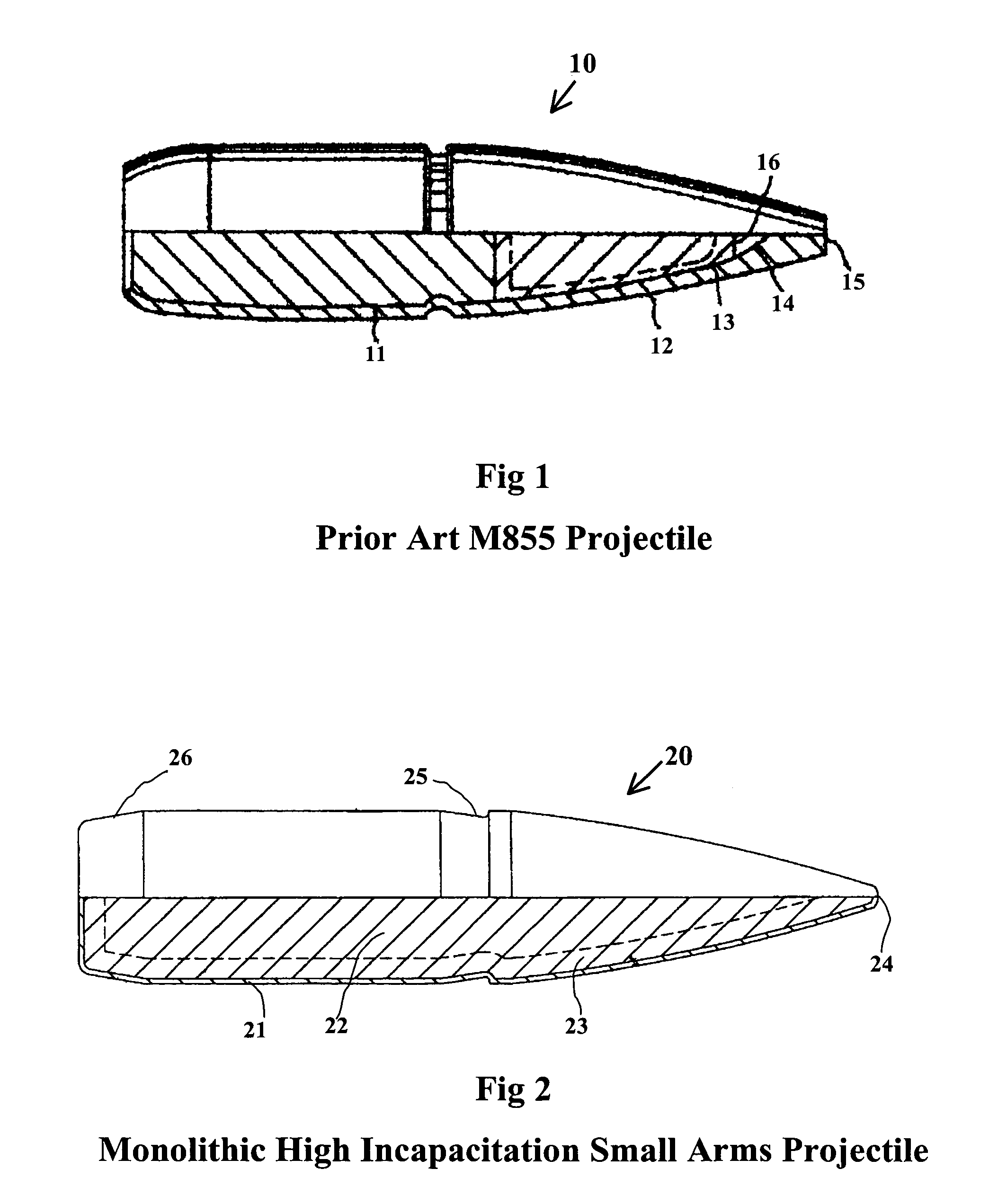Monolithic high incapacitation small arms projectile
a high-capacity, small-arm technology, applied in the direction of ammunition projectiles, weapons, cartridge ammunition, etc., can solve the problems of less than desirable terminal ballistics effects (incapacitation) against soft targets, projectiles with limited lethality or incapacitation effects at longer ranges, and low production accuracy requirements for each individual part, so as to increase the probability of rapid incapacitation and enhance the probability of hi
- Summary
- Abstract
- Description
- Claims
- Application Information
AI Technical Summary
Benefits of technology
Problems solved by technology
Method used
Image
Examples
Embodiment Construction
—FIG. 2—PREFERRED EMBODIMENT
[0040]Turning now descriptively to the drawings, in which similar reference characters denote similar elements throughout the several views, the attached figures illustrate both a prior art projectile such as the NATO 5.56×45 mm M855 referenced as FIG. 1, projectile 10 and the current invention FIG. 2, projectile 20.
[0041]It is seen that projectile 10 includes a lead or tungsten-tin / tungsten-nylon body 11 located behind a frustroconical steel insert or penetrator 13 which has a secant ogival exterior surface and a flat front end 16. Body 11 and insert 13 are encased within a gilding medal jacket 12 which has a relatively blunted tip 15 defining a conical air pocket 14 immediately in front of insert 13 inside of jacket 12. The flat front end of the steel insert 13 is supposed to allow projectile 10 to penetrate armor at greater obliquity than would be the case if steel insert 13 had a pointed nose because it is taught in U.S. Pat. No. 4,619,203 that a poin...
PUM
 Login to View More
Login to View More Abstract
Description
Claims
Application Information
 Login to View More
Login to View More - R&D
- Intellectual Property
- Life Sciences
- Materials
- Tech Scout
- Unparalleled Data Quality
- Higher Quality Content
- 60% Fewer Hallucinations
Browse by: Latest US Patents, China's latest patents, Technical Efficacy Thesaurus, Application Domain, Technology Topic, Popular Technical Reports.
© 2025 PatSnap. All rights reserved.Legal|Privacy policy|Modern Slavery Act Transparency Statement|Sitemap|About US| Contact US: help@patsnap.com


